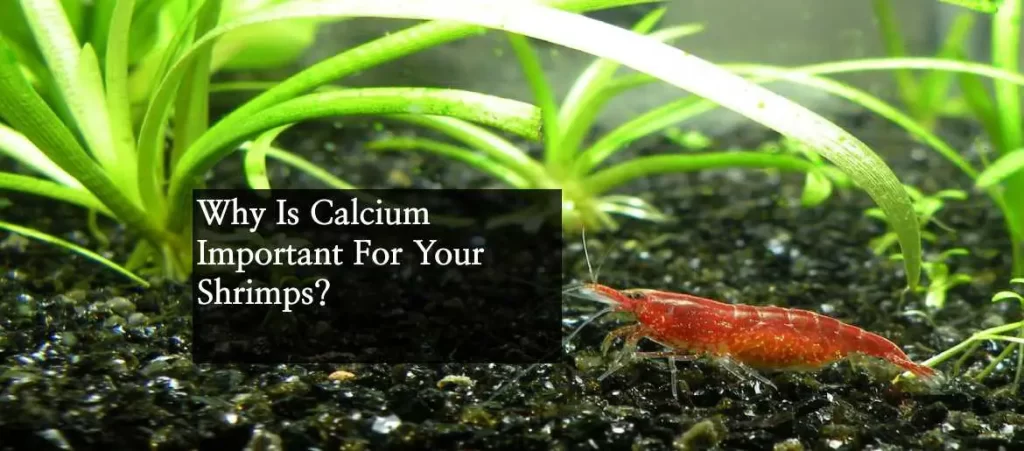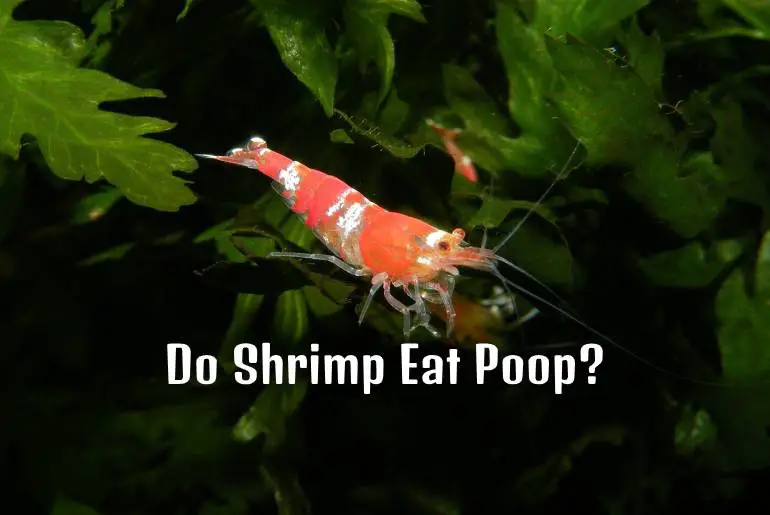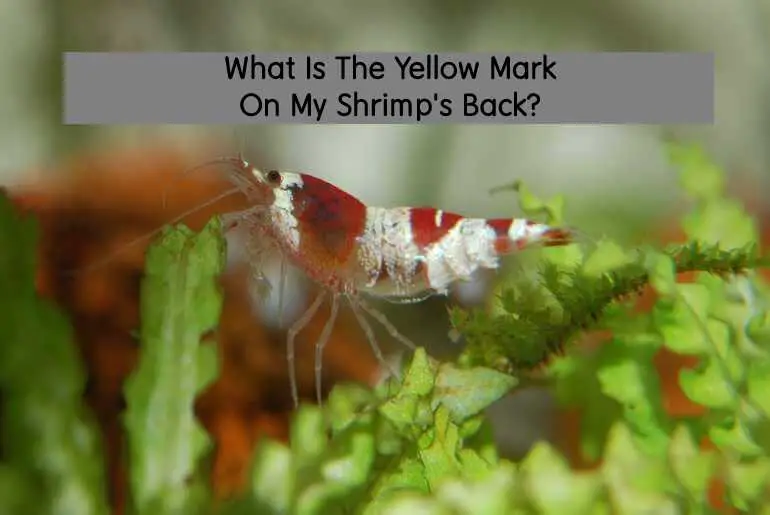I asked my brother, “What do you need as a birthday gift?”. He said he wanted to pet shrimps, so he asked me if I could get an aquarium and shrimps for him. He also showed me some pictures of our cousin’s aquarium, and it seemed very lively. I asked a few of my friends about petting shrimps, and what all of them mentioned in common was “calcium”. I wondered why calcium was necessary for shrimps? Thus, I searched across search engines and found out that calcium is essential for the survival of shrimps as a whole.
Calcium is pivotal to shrimps as they molt often. Shrimps have external shells, which limit their growth. The only way for shrimps to grow is by discarding their old shell. This process is called molting. Adult shrimps molt once in a month, whereas baby shrimps can molt every few days. During this process, shrimps need more calcium and minerals to reconstruct their new shells. So, what calcium does is it makes the new shell stronger and harder.
Research indicates that 30%-50% of shrimp shells are made up of calcium carbonate, whereas protein and chitin constitute 30%-40% and 20%-30%, respectively. Therefore, we can be pretty sure calcium is much necessary for shrimp’s survival as a whole.
Why Is Calcium Important For Your Shrimps?
- Calcium affects the breeding process of shrimps greatly. If the amount of calcium and magnesium is not proper on shrimp’s diet or water, then they can stop breeding at all, or they can lose eggs.
- Calcium makes the digestion system of shrimps better. Since they eat all sorts of algae and many other things, they need a strong immune system to digest them. Such immunity systems help fight different diseases and toxins.
- It helps to regulate the level of oxygen and stress on the shrimp body.
- Calcium is needed for maintaining salt levels in the shrimp body that helps in the proper functioning of muscles, heart, and nerves of shrimp.
Supplementing Shrimps with Calcium
There are various ways you can supplement shrimp with calcium. You may be surprised to know that you can even provide them with calcium with some “household waste” or vegetables that you buy for yourself, you may think. Shrimps can extract calcium from food as well as water. Check out what else you can use as supplements:
Chicken Eggshells Powder
Chicken eggshells are the most commonly used calcium supplement for shrimps. To make chicken egg powder, you can follow the following steps:
- Boil eggshells for 10 minutes; it helps to kill harmful bacteria.
- Let it cool, and remove the membrane from inside the eggshells. The powder will be clean if you remove it.
- Use an oven or toaster to roast it for 5 to 10 minutes, so that it becomes crispy and dry.
- Use a grinder or pestle to crush them to a fine powder.
- Add the powder to your tank, add a pinch to it at first. Put the next dose next month.
Note: You may notice the powder floating at first, but it will dissolve after some time.
Some people put the eggshells even without boiling them, but it is not safe as eggshells may contain harmful bacteria, which may eventually harm the shrimps or other small fishes your pet.
Cuttlefish Bone
Cuttlefish bones can be easily purchased from any vet shop or departmental stores in the bird’s section. It is even fed to birds to make their beaks strong. It is a very good source of calcium yet very cheap.
You just need to break the cuttlefish bone into pieces. It slowly dissolves in water and supplements your shrimps with calcium. Remember, it takes time. Also, if your cuttlefish bones are floating, tie them to pebble so that they rest on the ground.
Wonder Shells
Wonder shells have multiple advantages. On the one hand, it clears water and removes chlorine, whereas, on the other hand, it provides shrimps with calcium. Aquarists say that shrimps love it a lot. It takes a few weeks for it to dissolve.
Antacids
Antacids consist of calcium, aluminum, magnesium, and sodium bicarbonate. Shrimps go crazy for those tablets. Especially if you are in the States, antacid tablets “tums” are available easily, which people use for heartburn relief.
But you must always be careful about how much you add to the tank. It dissolves in water very quickly. If you are using it for the first time, use ¼th of the tab to see how shrimps react to it.
Member’s Mark Ultra Strength Antacid Calcium Carbonate 1000 mg Tablets (530 Chewable Tablets) gives your shrimp the nutrition it needs.
Vegetables
Do not just depend only on commercial foods to supplement shrimps with calcium. Vegetables like kale, spinach, green beans, broccoli, carrots, lettuce, cabbage, and pumpkins, etc. are very rich in calcium. Kale provides the highest calcium of all the vegetables, which is: 137 mg per 100 gms. Spinach, on the other hand, provides 99 mg per 100 gms.
Oyster Shells And Crushed Corals
Both oyster shells and crushed corals are high in calcium. The calcium supplement tablets you use for shrimps often contain oyster shells. But they also have salt in them, which can negatively affect the shrimps. So, one must be very careful about the amount they use.
LITTLE FARMER PRODUCTS Oyster Sure Shell is the Calcium Supplement with 5 lbs in each packet for below 20 bucks.
Other Complementary Feeds
Crushed eggshells powder, vegetables, cuttlebones, etc. provides high amounts of calcium for your shrimps, but sometimes it may not be enough. You may have to feed them with complementary supplements that are specifically made for them. Supplements may have different names in various countries and can be purchased from fish shops or vet shops.
Water Mineralization
As I have mentioned earlier, shrimps can get calcium from both food and water. This process is giving calcium through the water. In this process, we mix essential minerals in the water, which can be found in the market. It is often referred to as mineralizations only.
Do you know that shrimps eat their old shells? Also, they are a high source of calcium for them.
It’s easy to supplement shrimps with calcium, isn’t it?
White Lines In Shrimps Body- Ring Of Death?
Many aquarists say that they often notice white lines on their shrimp’s body and eventually find most of them dead in a few days. Have you ever faced that?
Well, this white line tells us that the molting process of shrimp was unsuccessful. This represents the exposed body part of shrimps. It also shows two exoskeletons of shrimps that have no connection.
There can be two reasons behind it: water parameters and diet. Lack of calcium and protein in their diet can be one of the reasons for the white line in shrimp’s body. But this is a less common reason.
To Maintain Aquarium Water Hardness, check our Freshwater Aquarium Guide. Similarly, we have another article on how to maintain the ph of the tank water.
Things To Take Care Of To Avoid The White Lines In Your Shrimp’s Body
- Do not change the water often.
- Give proper diet and calcium, mineral supplements to shrimps.
- Use Mineralizers
- Using Carbon dioxide can be a major cause of this problem, so stop its use.
Did you know, some species of shrimps are nocturnal, they only come out at night to eat? They hide in daylights.
Too Much Calcium, Is It Beneficial For Shrimps?
We already know that calcium is essential for shrimps for their overall development and survival. But, do you know if too much calcium is beneficial for your shrimps?
The answer is “NO”. Calcium should be given in an appropriate amount to shrimps. Less or more amount of calcium both negatively affects shrimps.
What Happens When We Give Too Much Calcium To Shrimps?
When we keep too much calcium in the shrimp aquarium, it increases the hardness level of water. It makes the new shell of the shrimps very hard. As a result, when they try to molt, their shell does not break at all! Shrimp use a lot of energy to break the shell, due to high levels of stress, they may die.
What Happens When We Give Less Calcium To Shrimps?
When calcium content is low in an aquarium, it makes the water softer, which means, GH level of water is low. As a result, the exoskeleton or the outer shell of shrimps becomes very flexible and malleable.
So, when they try to molt, again, the shells don’t break, or the layer beneath the shell becomes very weak. As a result, they may die during a molt or shortly after the molting process.
Conclusion
Calcium is a key element for shrimps. It is necessary for their growth, breeding process, and survival to be precise. You just need to make sure that you put a suitable amount of calcium as per the size of the tank, the quantity of water, and the number of shrimps you keep.
Shrimps are one of the easiest and lively pets to keep. They are fun to watch, the way they walk around the aquarium, the way they clean themselves often, or the way the female shrimps carry their eggs in their body. People often refer to shrimps as “cleaning crew” as they tirelessly clean most of the things they find in the aquarium: algae, vegetables, dead plants, etc.
The cherry on the cake, they provide extra attention to your living room. So, enjoy watching your shrimps and freshen up your mood after the long, hectic day.
Related articles:






